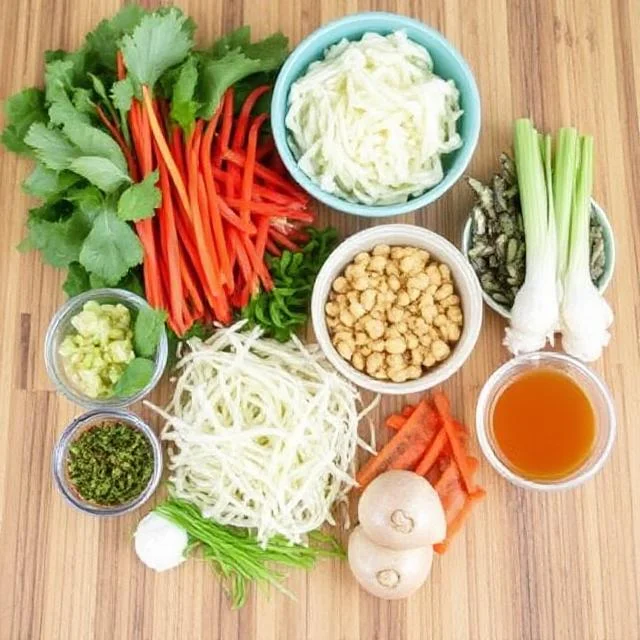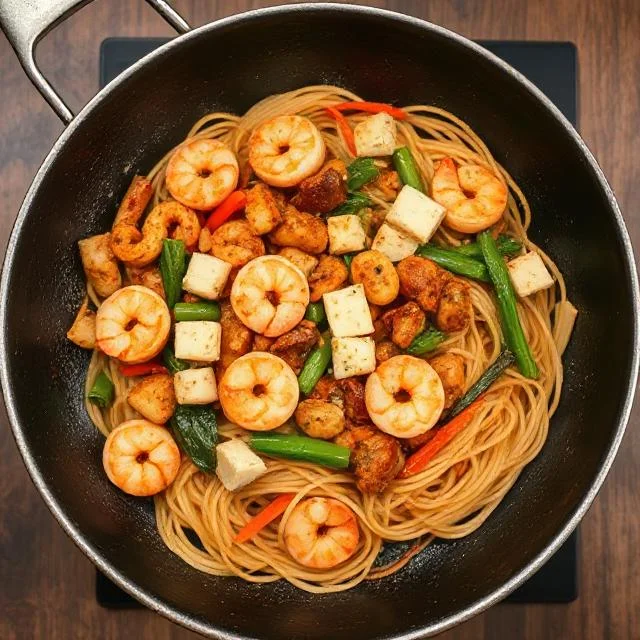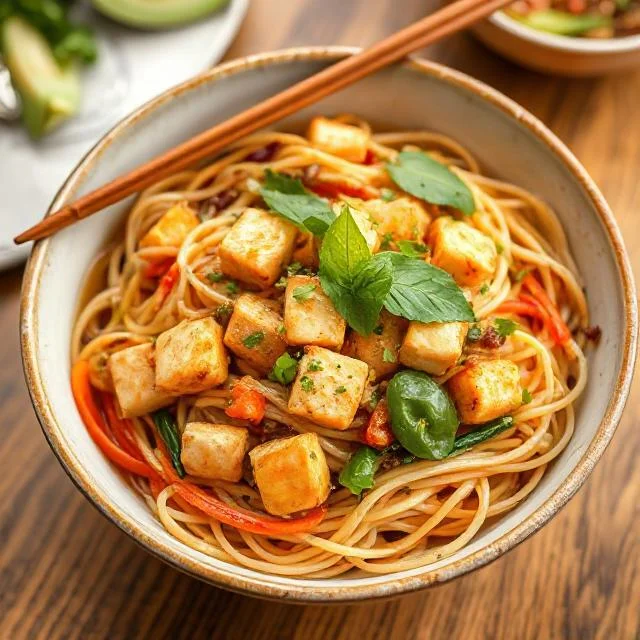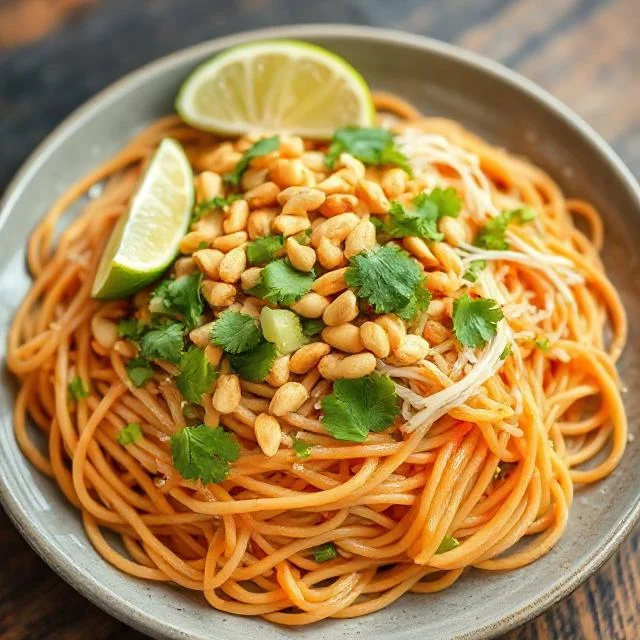Pad Thai is a beloved Thai street food dish known for its perfect balance of sweet, sour, salty, and savory flavors. Whether you’re a Pad Thai newbie or a seasoned cook, this step-by-step guide will help you create the perfect Thai Street Noodles in your own kitchen. Let’s dive into everything you need to know—from the essential ingredients to step-by-step instructions and tips for customizing your dish.
Essential Ingredients for Pad Thai
The secret to a perfect Pad Thai starts with the right ingredients. Here are the basics you’ll need:
Rice Noodles
These flat, thin noodles are the heart of the dish. They should be soaked in warm water to soften them before cooking.
Protein Options: Shrimp, Tofu, or Chicken
Whether you prefer seafood, plant-based, or chicken, Thai Street Noodles is versatile. Shrimp is most common, but tofu is a great option for vegetarians.
Pad Thai Sauce
This flavorful sauce is a mix of tamarind paste, fish sauce, sugar, and lime juice. The combination adds that signature tangy, salty flavor.
Fresh Vegetables and Herbs
Bean sprouts, spring onions, cilantro, and lime wedges are traditional garnishes that enhance the freshness of the dish.
Peanuts and Chili
Crushed peanuts and chili flakes give the dish a satisfying crunch and a spicy kick.

A variety of fresh ingredients for Thai Street Noodles including rice noodles, tofu, shrimp, tamarind paste, lime, and peanuts
Step-by-Step Instructions for Making Pad Thai
Preparing the Noodles
First, soak your rice noodles in warm water for about 20-30 minutes until they are soft. Drain them well and set them aside to avoid clumping.
Making the Pad Thai Sauce
In a bowl, mix together tamarind paste, fish sauce, sugar, and lime juice. Adjust the ingredients to your taste, depending on how tangy or sweet you prefer the sauce.
Stir-Frying the Ingredients
Heat oil in a wok or large pan over medium heat. Add your protein (shrimp, tofu, or chicken) and cook until browned. Then, toss in garlic and any additional vegetables you like (bell peppers, carrots, etc.).
Adding the Noodles
Add your drained noodles into the wok with the cooked protein and vegetables. Pour the Pad Thai sauce over the noodles and stir-fry for a few more minutes until everything is well-coated.
Finishing Touches
Once everything is cooked through, crack an egg into the wok, stirring it until scrambled and fully incorporated into the noodles. Serve immediately.

A wok with stir-fried shrimp, tofu, vegetables, and noodles in Thai Street Noodles sauce
Common Mistakes to Avoid When Making Pad Thai
When making Pad Thai, there are a few pitfalls to watch out for to ensure your dish turns out perfect every time.
Overcooking the Noodles
Thai Street Noodlesnoodles should be al dente, not mushy. Be sure to monitor the noodles as they soak and don’t overcook them in the wok.
Burning the Garlic
Garlic can burn quickly when stir-frying. Make sure to add it just before the protein and vegetables to avoid an overly bitter taste.
Incorrect Sauce Ratios
If your Pad Thai is too sweet or too salty, you’ve likely got the wrong balance in your sauce. Adjust the tamarind paste, fish sauce, and sugar carefully until you get the perfect flavor.
Skipping the Egg
The egg is a key ingredient in Thai Street Noodles that adds richness and texture. Don’t skip it, as it helps bind the noodles and enhances the overall flavor.

Overcooked noodles and burnt ingredients in a wok—common mistakes when making Thai Street Noodles.
How to Customize Pad Thai for Your Preferences
One of the best things about Pad Thai is that you can easily adjust the ingredients and make it your own. Here are some ideas for customizing your dish:
Vegetarian Pad Thai
Swap out the shrimp or chicken for tofu or tempeh. Use a vegetarian-friendly Thai Street Noodles sauce (substitute the fish sauce with soy sauce or miso paste).
Spicy Pad Thai
If you like it hot, add extra chili flakes or fresh chilies to the sauce, or garnish your plate with fresh chili slices.
Sweet or Sour Pad Thai
Adjust the sugar and lime juice ratio in the sauce to make your Thai Street Noodles either sweeter or more tangy, depending on your preference.
Additional Toppings
You can add extra toppings like crushed peanuts, fresh bean sprouts, or pickled radishes to elevate the dish and add more texture.

A bowl of Thai Street Noodles customized with tofu, extra veggies, and a vegetarian-friendly sauce
Serving and Enjoying Your Perfect Pad Thai
Once you’ve finished cooking your Pad Thai, it’s time to serve and enjoy! Here’s how to make the presentation just as perfect as the dish itself.
Garnish It Right
Top your Pad Thai with fresh cilantro, lime wedges, and a generous amount of crushed peanuts. These garnishes will not only enhance the flavor but also make your Pad Thai look vibrant and inviting.
Pair with Drinks
Pad Thai pairs wonderfully with a cold beer, a glass of Thai iced tea, or even a light white wine. The refreshing beverages complement the rich, savory flavors of the dish.
Serving Size
Thai Street Noodles can be served as a main dish for one or as part of a larger Thai meal with other dishes like spring rolls or Tom Yum soup. It’s always a hit at family dinners and parties.

A plate of Thai Street Noodles topped with peanuts, cilantro, lime wedges, and fresh bean sprouts.
Conclusion: Mastering Pad Thai at Home
Making Pad Thai at home is easier than you think. By following the right steps and using fresh ingredients, you can create a delicious, authentic dish that rivals any Thai restaurant. Don’t be afraid to experiment with your preferred flavors and textures, and soon you’ll be making the perfect Thai Street Noodles every time. Enjoy your homemade meal, and don’t forget to share it with friends and family for a truly satisfying experience!
Advice
To make your Pad Thai even better, it’s important to focus on balancing the flavors and textures. Thai Street Noodles is all about the perfect harmony between the salty, sweet, sour, and spicy elements. Don’t be afraid to adjust the sauce ingredients to suit your personal taste—if you prefer a tangier dish, add more lime or tamarind paste; if you like it sweeter, increase the sugar just a bit. Additionally, make sure not to overcook your noodles; they should remain al dente for that signature Pad Thai bite. Experiment with different proteins or add extra vegetables to make it your own, and don’t forget those essential toppings—crushed peanuts and fresh cilantro bring a crunchy and fresh contrast that elevates the dish. Finally, for a truly authentic experience, serve your Thai Street Noodles with a cold drink, like Thai iced tea or a chilled beer, to complement the dish’s flavors and enjoy a satisfying meal.

